Last-Minute NYC Holiday Gift Guide 🎁
We’ve created a holiday gift guide with presents for the intrepid New Yorker that should arrive just in time—


In the second installation of our new series, NYC Makers, we profile Dan Barasch, Co-Founder of The Lowline and the author of the newly published Ruin and Redemption in Architecture from Phaidon. The Lowline is the plan to transform the abandoned New York City trolley terminal on the Lower East Side into the world’s first underground park. Barasch previously held leadership rules at Google, UNICEF, the 9/11 Survivors’ Fund, and within New York City government and began his career co-producing the weekly NPR show, “It’s Your World.”
We met with Barasch inside the Grand Street Settlement, a 100+ year community organization, now located in the first building constructed as part of the Essex Crossing development which overlooks the The Lowline site. We spoke about his new book, which explores four categories of abandoned spaces: lost, forgotten, reimagined, and transformed, and covers 66 architectural case studies around the world. Several of these projects well-known to New Yorkers and our readers such as the original Penn Station, Pan Am Worldport terminal at JFK Airport, Yonkers power plant, the High Line, and of course, the Williamsburg Bridge railway terminal that is the proposed site of The Lowline. Going beyond ruin porn, the projects taken together, or individually, address the wide-ranging implications of ruined spaces. In the profile, we spoke together about New York City’s great spaces and the challenges the city faces, and predominantly, what we should celebrate about this city we all share.
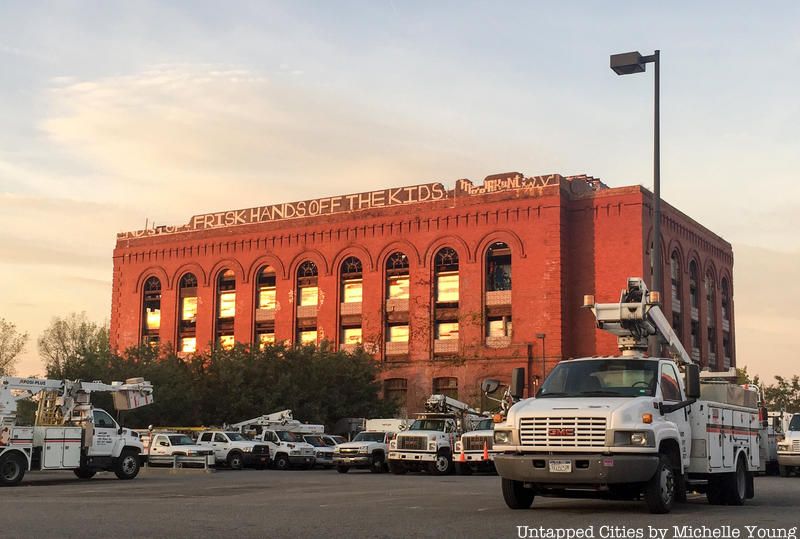 The Gowanus Batcave
The Gowanus Batcave
Barasch: The place that I think is the coolest is the Gowanus Batcave, the old power station that was used for so long as a graffiti space and artist takeover. That place is one of coolest structures. It’s amazing. I just love that there’s this idea of trying to reclaim it for some kind of creative use. There are so many different things that one could do with that space, but the impulse to turn it into an arts center is one of the interesting trends in abandoned spaces. They inspire their re-imagination as creative centers, either the more traditional higher-end art space or something that’s a more non-profit oriented type of experience. Or in this case, my understanding is that the inspiration is, “Let’s celebrate some of that creative informal use and almost codify and systematize it with this new creative center,” which I just think is just a really cool concept.
I think this question of how to support our artists and make spaces available is a really significant and important question for cities like ours. What kinds of protections do we have for the creative members of the city that can no longer afford to live or work anywhere?

Inside the former Lowline Lab, which tested the technology to build an underground park
Here we discussed how the building that the Grand Street Settlement is located in at Essex Crossing feels lived in, due to the type of activity within and the presence of senior housing which diversifies the community makeup. It feels like it has a soul, even though the architecture of the building, though well-designed, could feel generic to anywhere in the city. And why a development like Essex Crossing, which has 51% affordable housing, has a far different reception amongst New Yorkers than Hudson Yards, though both are brand new neighborhoods.
Barasch: I had an opportunity to go and speak in Australia, at Melbourne and Sydney, to city leaders. One of the more fun aspects of my work over the last decade has been getting to know people from other cities and seeing how other cites are grappling with neighborhood change, seeing how committed the city leadership is and the mayors are in doing certain kinds of civic things. And all anyone there wanted to ask us about was Hudson Yards. The reason why they were asking is because it stands in as a symbol of this massive corporate development that makes a lot of people very uncomfortable. And for the people that we were talking to, I think there was this sense of “Isn’t that crazy? What do New Yorkers think about Hudson Yards?”…It’s an interesting urban question. Hudson Yards is now the newest metaphor for that larger question of what happens when you build these colossal skyscrapers in a very Robert Moses-ian mentality and create a new neighborhood without any of the history of ground-level focus that I think is what actually makes New York City great.
Here we discussed how not all types of art centers are appropriate for neighborhoods and that they have to be tailored for the community, rather than using culture as a magnet for a broader real-estate development.
Barasch: A lot of times when you talk about culture, a lot of people at the community level are opposed to it. Not because they don’t like culture, but because it stands in for a high-brow conception of culture. And so, you can dress it up and have as many people of color as you want on the programming bill but it’s not the same thing as a grassroots-oriented organic, community-led cultural organization.
Michelle Young, Untapped Cities: That’s what I liked about the Mile Long Opera that was along the High Line because a lot of community groups from all over the city came together to do that performance.
 The Mile Long Opera on the High Line. Photograph by Liz Ligon
The Mile Long Opera on the High Line. Photograph by Liz Ligon
Barasch: I’m glad you mention that. That’s one of my favorite things I’ve seen along the High Line or even elsewhere. It’s a perfect use of the High Line as a cultural experience because where else in the city can you do that kind of linear expression as an art form, opening it up and bringing all these choirs from around the city together. Every time I went I felt the marvel of the city. And that was always the magic of the High Line experience. You’re not on the ground level but you’re not in the clouds, you’re sort of floating through the city at a different vantage point than most people have, so you appreciate the streetscape, you appreciate all of the residents and everything else happening around the city. You feel like a part of a lot of the development and everything changing but then you also literally walk through “The City.” It’s extraordinary. That was one of the better things that I’ve seen culturally, something that actually brings everyone together.
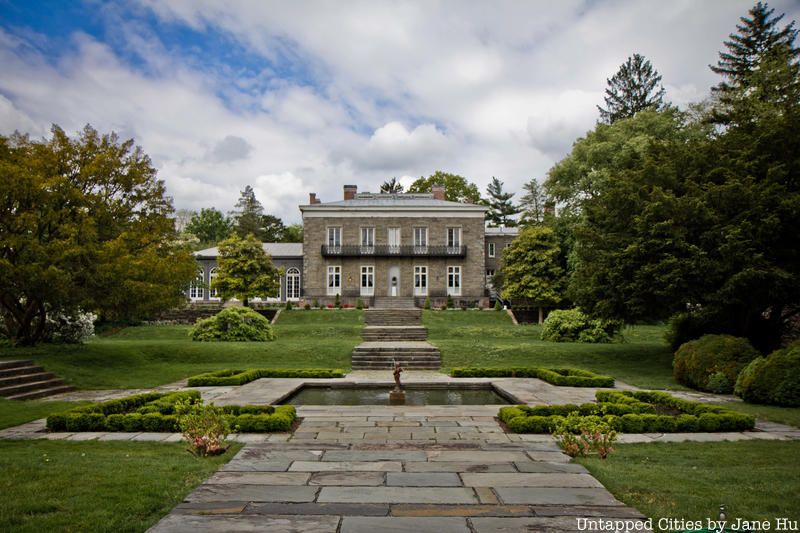
The Bartow-Pell Mansion in Pelham Bay Park
Barasch: It’s embarrassing that I haven’t been to Pelham Bay Park. That’s embarrassing right? It’s huge right? and beautiful?
Michelle Young, Untapped Cities: Yeah. It’s beautiful. You have Robert Moses’ Orchard Beach, that was man-made, then you have marshland, and the stunning Bartow-Pell Mansion. And City Island is nearby, and there are horse farms…
Barasch: I’d probably put Pelham Bay Park on the top of my bucket list, but I would also say that I do not spend enough time being adventurous with restaurants in Queens. It’s really high on my list but now with a little baby it’s way less likely. But something that I’ve always really wanted to do is do a sampling of the different foods in different neighborhoods around Queens.
Barasch: In some ways my whole life has been [about] the inevitability of my living in New York. All of my family is from New York. I’m fourth generation here. I went to high school outside the city, I tried to live in California for a while. I tried to live in Boston and D.C. for a while. And each place, I kept being pulled back to New York for the simple reason that I don’t feel like anywhere else has anything close to this kind of energy. For people who are inspired by being around other people who are really different from them, and being inspired by people who are really creative and interesting and curious about the world, it’s impossible to beat anywhere else I have been, at least in the U.S. I’m sure there are lots of other cities [like this] around the world that I haven’t visited yet. The dynamism in New York City [makes it] just the most compelling American city from the standpoint of diversity and creativity.
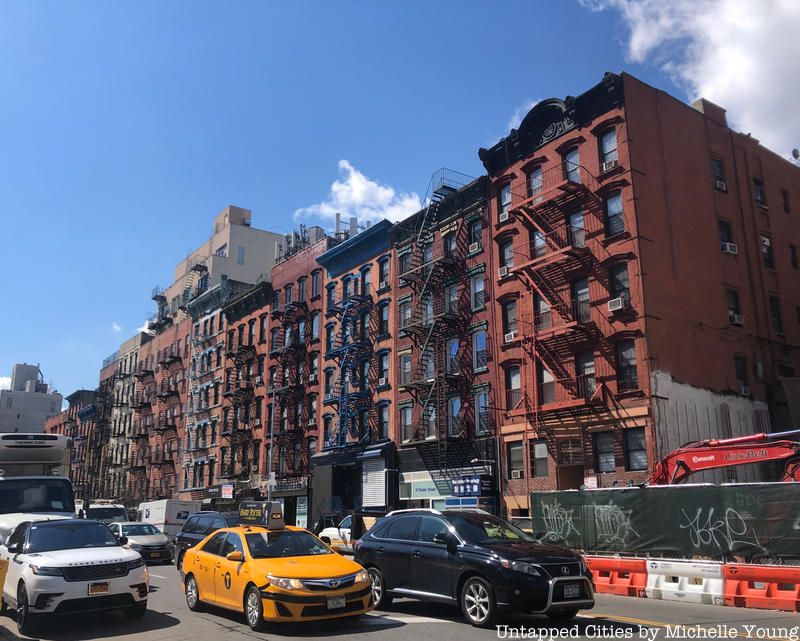
Lower East Side tenement buildings
I’m just really also compelled by the built environment and how the built environment makes me feel about ourselves and each other. So, the juxtaposition you see just looking out the window is impossible to ignore. Here you have all these old tenement buildings with all their history embedded within the buildings themselves, directly next to something that is incredibly modern. We have a streetscape and an urban architecture tableau that is so mixed and so chaotic and so crazy, that again, when you go to other cities, you don’t necessarily see that same kind of a feeling. When you go to European cities, or even cities across the United States, you sometimes feel a kind of uniformity neighborhood by neighborhood. Within most of the older neighborhoods in New York City it’s just a hodgepodge of craziness and it feels like there’s no rhyme or reason to the way buildings were pushed together and the uses of those buildings also sometimes feels completely crazy. So I feel like what that ends up doing, and the way it makes us feel walking around the city is that you end up feeling that the chaos that either works for you or doesn’t. For some people, it’s completely confusing and it’s a hot mess. For some people, like me, it’s inspiring and you realize that if you were paying attention you could learn something new almost every single day just by looking around and by being curious.
Michelle Young, Untapped Cities: Do you think that has to do with the density of New York? Some of the elements of what you described probably could happen in other cities but the fact that literally, from the beginning of the city, there is a certain confinement geographically. That’s the nature of how many people can actually live here.
Barasch: Yeah, that’s totally right. It’s the density. In some ways the subway system is a great metaphor for the city. It’s incredibly frustrating and right now things don’t seem to be working so well. But everyone is literally forced together. I took four or five different subways today and in each of them you see all walks of life interacting with each other in ways that is weirdly respectful. The fact that the social compact works is amazing to me. Why are we all getting along? I don’t really know, but we are. It’s like a miracle in a way.
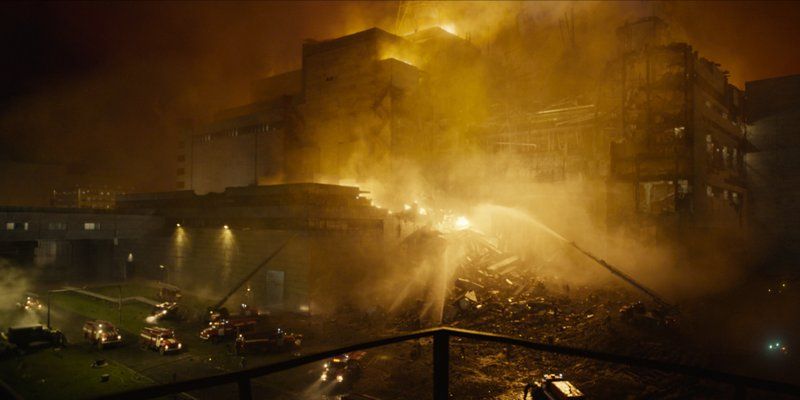
From Chernobyl on HBO. Photo courtesy HBO
Here we take a brief foray into the latest television show Barasch is watching, Chernobyl, on HBO. And talked about how television has become high brow. “If Shakespeare were alive right now, he’d be writing for an HBO show,” he joked.
Barasch: It’s really good. it’s like 5% cheesy and 95% amazing. They talk a little bit about what a nuclear reactor actually is and the explosive aspect of nuclear material. In some ways it sort of reminds me of New York City in a way. There is so much energy here, there are so many neutrons, electrons, and positrons, just cruising around here. It has an energy that is more than the sum of its parts.
Major global cities that have that spirit of dynamism and creativity mix history and future really well. You have neighborhoods that have been around for a hundred, two hundred, three hundred years. And they’ve been built upon, and built upon, and built upon, and shifted and shifted. The demographics change every generation. And then [the city] is also not afraid of building huge skyscrapers and really new modern designed buildings. And so it’s not just snapped in amber, like certain sections of Paris where it’s like “do not touch,” it’s this perfect mausoleum. It’s one of the things that makes New York so extraordinary, and so frustrating. You have to fight, fight, fight to preserve any bit of history, but that also means that because the demand is so high for developing something really new, you also have this tug and pull between extremely modern futuristic thinking and holding onto some nostalgic view of the past. It’s a nice mix and [the city] doesn’t ossify in the same way as other cities do.
Michelle Young, Untapped Cities: I think it is about that balance that is so critical.
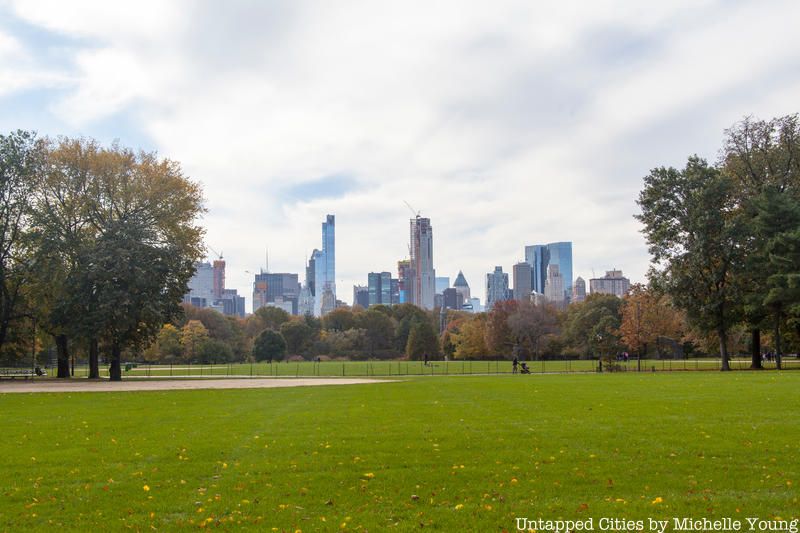
Central Park
Barasch: I would like the city to step up and be more focused on investing in the public realm. A generation ago, I think the conversation in New York City was in this dialogue of, “Let’s clean up neighborhoods. Let’s reduce crime, and let’s make it safer for people to live here.” That was the dominant urban narrative. And now I think the dominant urban narrative is so different – it’s the opposite. It’s “Let’s address questions of inequality, let’s address questions of gentrification, let’s address the housing crisis,” and have a more empathetic approach to some of the unfettered capitalization that we’ve unleashed.
To me, I think it’s a generational moment where we need government to step up at a higher level. We have a world in which the oligarchs in our town populate all of our boards and our conservancies, and help fund the public spaces and parks around the city. Real estate development teams have extraordinary amount of power in dictating how communities are built and change over time. Community groups are often playing defense against this impulses of major developers without the tools to really fight and government is sort of sitting, in many cases, idly by and not being willing to invest the capital and the time to ensure all the communities that we live in are actually livable…
What that means in practice, and where I’d like to change – and it’s a much bigger problem that it might even sound naive to put it out there from a policy standpoint but – the city needs to be funding green spaces and public parks and leading the country and even the world in investing in public and social infrastructure in a way that is a lot more forceful than it currently is. We need public spaces and green spaces and we need spaces where the most vulnerable members in our communities can enjoy. It shouldn’t be seen as a nice to do, it should be seen as one of the reasons why New York City is a livable, beautiful and brilliant place to live, not for tourists but for actual residents who live here.
I just finished Michelle Obama’s biography Becoming. And I was also reading a book on Governor’s Island recently by Ann Buttenwieser called Governors Island: The Jewel of New York. It’s a really, really fun book about the history of Governors Island.
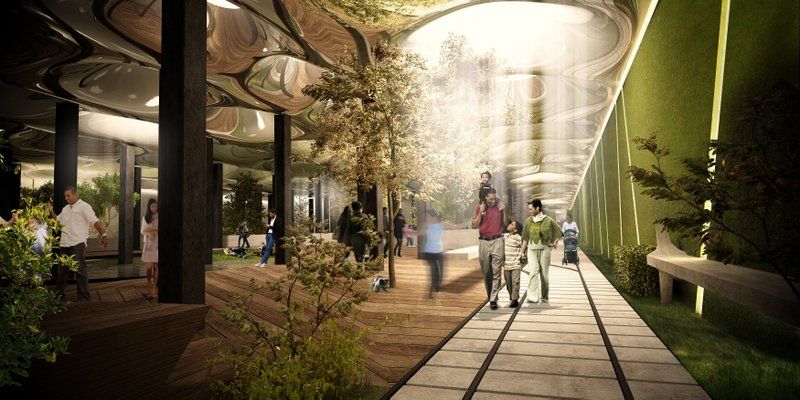 Rendering from The Lowline
Rendering from The Lowline
The Lowline had this incredible arc of the last decade. In 2016, we received conditional designation from the City of New York. Deputy Mayor Alicia Glen signaled a lot of support from City Hall for the project. And then from there, we entered into conversations with the city around whether they would be willing and able to contribute financially to the capital construction costs. And for a while that seemed like that was going to be possible. But for a variety of reasons, including the political zeitgeist, and also the inclinations of this administration, the funding has not been forthcoming.
Our board has essentially voted to give ourselves more time to do this and recognize that it will probably take a little bit more time to raise the capital. It’s an incredibly complicated project, just from a technical standpoint – being underground, being adjacent to a subway station, being adjacent to this colossal real estate development here.
But I think there’s a lot of different things that are a cause for optimism. Essex Crossing will be completed, and [The Lowline] will be living within a post-Essex Crossing Lower East Side, which is an interesting thing to think about. How’s The Lowline’s value proposition in that context? We’re also a project that’s ready to go, so I think we may be ready to go for the next mayor. And that strikes me as the right timing to heat this back up a little bit. So we’re sort of on hold for the moment.
Michelle Young, Untapped Cities: Every mayor or President needs a signature urban project.
Barasch: Right, I think we have something really spectacular for the next mayor to really take on. I think The Lowline is an idea that is waiting to happen. I’m getting out there and talking a lot to different kinds of cities about how this can happen elsewhere. We’re totally open to the idea of it happening elsewhere. This location obviously tugs all of our heartstrings, it makes sense for so many different reasons, technically and also culturally. But I think that The Lowline is going to happen somewhere. I think there’s a hunger and appetite for it and I hope it’s here, but I’d be more than open to helping any other group do it if they want to do it somewhere else.
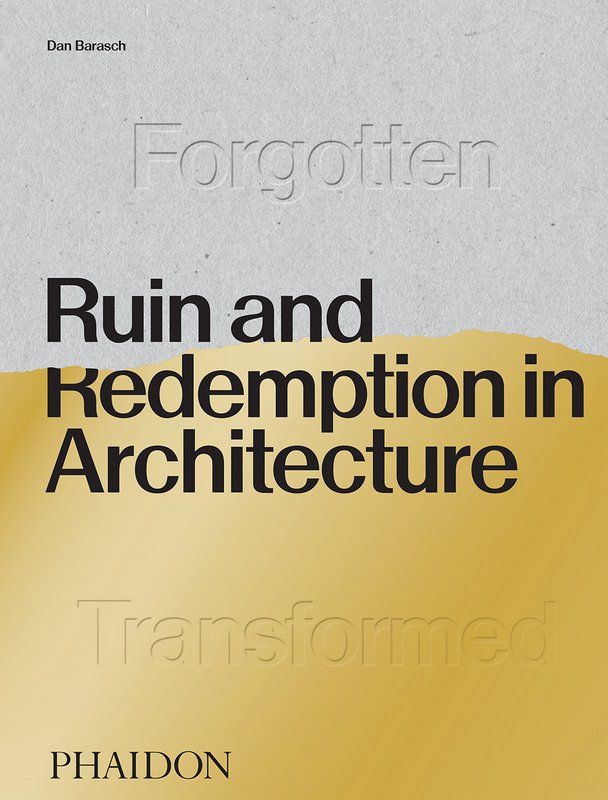 Ruin and Redemption in Architecture
Ruin and Redemption in Architecture
Michelle Young, Untapped Cities: Are you working on anything else, I’m sure you are!
I’ve been doing promotion for Ruin and Redemption in Architecture, I’ve also been doing some consulting with some startups and some strategic advising for some philanthropists. All the work that I’m doing is at the intersection of how to make cities better, and specifically, New York City. Right now it’s been a fun series of consulting projects and I’ve needed that space after being so focused and heads down on The Lowline for the last decade. It’s a chance to look up and see how much the city has changed. I’m most interested in being a part of entrepreneurial teams which are trying to improve the city whether it’s private sector, public sector or a non-profit approach.
One thing that I wasn’t afraid to do and actually did it intentionally was to try to work in every possible sector I could. So, in my early stage of my career I worked for a non-profit and also produced radio for NPR. I worked for government – for Michael Bloomberg for a time on job creation. I worked for Google 10-15 years ago trying to scale up its business in a much more optimistic tech utopian time that we’re in today, not the dystopic nightmare we’ve created – so, sorry about that! And returning back to the social sector, and non-profit work. I found that to be really helpful – to gain the confidence that every sector is kind of the same. It’s really just a matter of solving problems and trying to bring people in. It’s different lingo and different objectives sometimes, but the elements of success are often pretty similar. It’s just a question of what you’re working on. So don’t be afraid to really make what looks like crazy zig-zags, or as Michelle Obama calls it, swerves. You’re doing something for a while, and you think, you know, this really doesn’t feel right to me and you do the swerve into something else that feels more real to you at that time, and really having the guts to do it.
Here, we spoke about entrepreneurism, and how it’s not for everyone. But if it’s for you, Barasch leaves us with a last piece of inspiring advice:
It’s always a mistake to try to do stuff on your own. You need partners. I’m a big fan of having a co-founder or a partner, or mentors, coaches…Try to realize there are some things you’re not that good at relatively speaking and let other people help you…I think the hallmark of really successful people is that they figure out ways to get other people do work for them and to inspire them. At the end of the day, you only have a certain numbers of hours in the day, and you can’t do everything. You need to get other people along the journey with you.
Check out our previous NYC Makers profile on Richard Southwick, architect of the TWA Hotel from Beyer Blinder Belle.
Subscribe to our newsletter